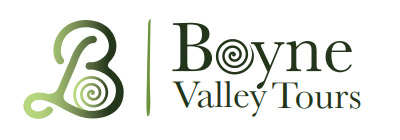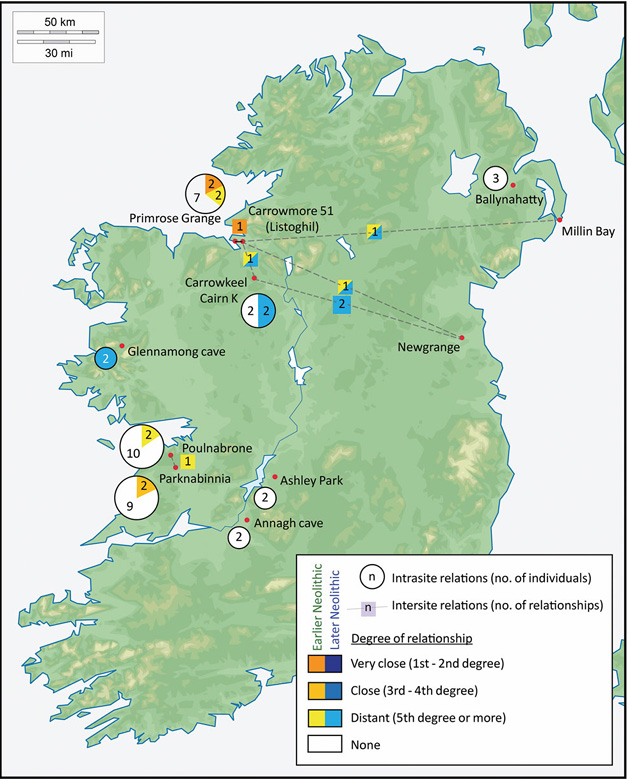Social and Genetic Relations in Neolithic Ireland: Re-evaluating Kinship
Reimagining Kinship in Neolithic Ireland: What Ancient DNA is Really Telling Us. When you think of Ireland’s great passage tombs at Newgrange, Knowth and Dowth, it’s easy to imagine them as the final resting places of powerful prehistoric families, buried together in grandeur, their lineage carefully preserved in stone. Recent ancient DNA research, however, is rewriting that story in fascinating ways.A 2025 study, Social and Genetic Relations in Neolithic Ireland: Re-evaluating Kinship, dives deep into the genetic and archaeological record of Neolithic Ireland and reveals something surprising: those buried together in these grand tombs were often not closely related at all.
A Challenge to the "Dynasty" Theory
In 2020, a landmark DNA study made headlines by suggesting that an elite ruling family dominated access to prestigious burial in passage tombs. But this new paper offers a more nuanced and in many ways more intriguing interpretation.Yes, people buried in these monuments were genetically linked, but usually only distantly, like sixth cousins or more. Instead of elite bloodlines controlling the tombs, the researchers suggest that Neolithic communities may have defined "family" in a much broader, more symbolic way.
The Tombs Were More Than Graves
The study explores how burial was only one part of what these monuments were for. Many tombs were used over centuries, and remains show signs of multiple complex funerary processes - cremation, dismemberment, and selective placement of bones. This wasn’t just about interment. It was about ongoing rituals, memory, and connection.Rather than simple "family plots," tombs like Newgrange were likely hubs of seasonal gatherings, social rituals, and cooperation among far-flung communities. Construction materials were hauled in from over 40km away, suggesting large-scale collaboration and shared cultural identity.
"Kin" Through Community
The researchers propose a powerful concept called "kinwork", the idea that people in Neolithic Ireland actively created kinship through shared labour, rituals, and relationships, not just blood. In this view, being buried in a passage tomb wasn’t about genetics, it was about belonging.And while earlier tombs, like portal or court tombs, sometimes include closer biological relatives, the trend shifts dramatically with the rise of larger, more complex passage tombs after 3600 BC. These spaces reflect a new kind of community, built not just on ancestry, but shared purpose.
A New Way of Seeing Our Ancient Past
This paper encourages us to see the past not as a mirror of modern assumptions like dynasties and inheritance but as a richly textured world of evolving relationships. Neolithic Ireland was a place of creativity, collaboration, and complexity.So next time you stand before the monumental stones of Newgrange or Knowth, remember: you’re not just looking at a burial site. You’re witnessing the physical legacy of ancient communities who built their world and their sense of family, stone by stone, ritual by ritual.
Boyne Valley Private Day Tour
 Immerse yourself in the rich heritage and culture of the Boyne Valley with our full-day private tours.
Visit Newgrange World Heritage site, explore the Hill of Slane, where Saint Patrick famously lit the Paschal fire.
Discover the Hill of Tara, the ancient seat of power for the High Kings of Ireland.
Book Now
Immerse yourself in the rich heritage and culture of the Boyne Valley with our full-day private tours.
Visit Newgrange World Heritage site, explore the Hill of Slane, where Saint Patrick famously lit the Paschal fire.
Discover the Hill of Tara, the ancient seat of power for the High Kings of Ireland.
Book Now
Home
| Visitor Centre
| Tours
| Winter Solstice
| Solstice Lottery
| Images
| Local Area
| News
| Knowth
| Dowth
| Articles
| Art
| Books
| Directions
| Accommodation
| Contact

